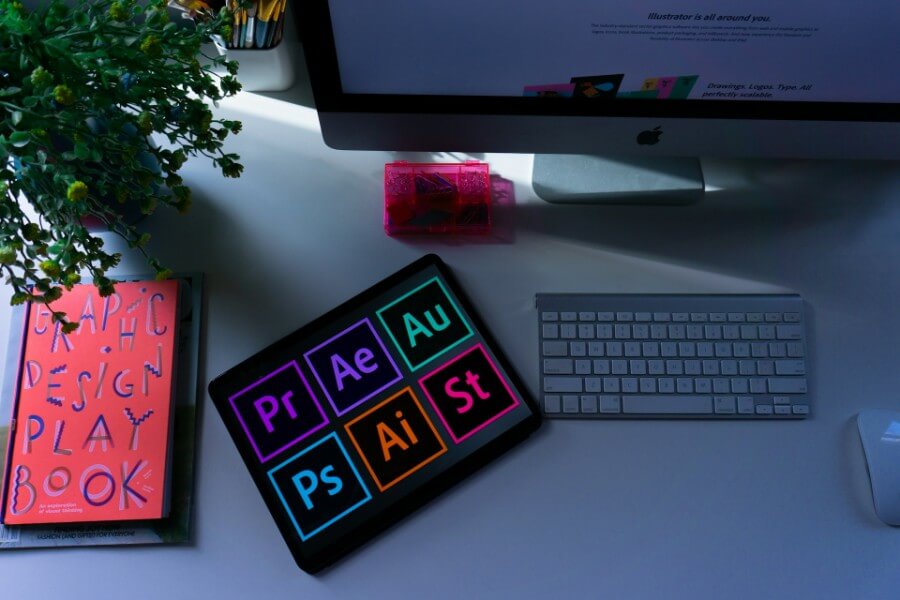
The world of graphic design is ever-evolving, with each year bringing new trends that redefine the boundaries of creativity and innovation. As we look towards the upcoming year, several key trends are poised to make significant impacts across various sectors, including digital marketing, branding, and user interface design. From the resurgence of nostalgic elements to the integration of advanced technology, these trends offer a glimpse into the future of design. Let’s explore these trends in detail.
Embracing Bold and Experimental Typography
Typography is not just a tool for conveying messages but an art form in itself. The upcoming year will see designers pushing the envelope with bold, experimental typography. This trend is about embracing risk, incorporating irregular layouts, and mixing fonts to create unique, eye-catching designs. Such typography isn’t just about aesthetics; it’s about making a statement and establishing a strong visual identity.
Practical Implications: Brands can leverage this trend to stand out on social media, in advertising campaigns, and even on product packaging. By adopting bold typography, designers can convey brand personality more effectively, making a memorable impression on the audience.
Sustainable and Eco-Friendly Design
As environmental concerns continue to gain prominence, graphic design is shifting towards sustainability. This trend emphasizes minimalistic designs, use of eco-friendly materials, and digital alternatives to reduce carbon footprints. Brands are increasingly showcasing their commitment to sustainability through their visual identities, using natural color palettes, organic shapes, and environmentally conscious messaging.
Practical Implications: Companies can adopt this trend in their packaging, branding, and digital content to appeal to eco-conscious consumers. This approach not only reduces environmental impact but also enhances brand reputation and customer loyalty.
Nostalgia and Retro-Futurism
Nostalgia has a powerful emotional pull, and when combined with futuristic elements, it creates a unique, captivating aesthetic known as retro-futurism. This trend merges the warmth and familiarity of past decades with sleek, modern designs, offering a comforting yet innovative visual experience.
Practical Implications: Utilizing retro-futuristic design can help brands connect with audiences on a deeper emotional level. It’s particularly effective in marketing campaigns, product design, and digital experiences, where a blend of old and new can captivate a broad audience.
Digital-First Branding
In an increasingly digital world, designing with a digital-first approach is becoming essential. This trend focuses on creating brand identities and experiences that are optimized for digital platforms, ensuring seamless interactions across all touchpoints.
Practical Implications: Brands must prioritize responsive logos, scalable vector graphics, and mobile-friendly layouts to ensure consistency and engagement in the digital realm. This approach is crucial for maintaining a strong online presence and enhancing user experiences.
Inclusive and Diverse Visuals
The call for diversity and inclusivity is louder than ever, and graphic design plays a crucial role in answering this call. This trend involves creating visuals that reflect the diverse world we live in, representing different cultures, identities, and experiences.
Practical Implications: Brands can adopt this trend by showcasing diverse imagery in their marketing materials, social media content, and advertising. This not only broadens their appeal but also fosters a sense of belonging and acceptance among audiences.
Motion and Interactivity
As technology advances, the possibilities for incorporating motion and interactivity into design expand. This trend is about creating dynamic experiences that engage users, whether through animated logos, interactive infographics, or web design elements that react to user interactions.
Practical Implications: Designers can integrate motion and interactivity into websites, apps, and digital advertisements to capture attention and enhance user engagement. This dynamic approach to design can significantly improve the user experience and increase conversion rates.
AI and Machine Learning in Design
Artificial intelligence and machine learning are transforming the graphic design industry, automating tasks such as banner generation, personalizing experiences, and opening up new creative possibilities. These technologies allow for the analysis of design trends, automated creation of personalized content, and the exploration of generative art.
Practical Implications: Designers and brands can leverage AI tools to streamline the design process, create more personalized user experiences, and explore new creative territories. This trend is particularly impactful in data visualization, personalized marketing, and user interface design.
Conclusion
The graphic design trends of the upcoming year reflect a blend of artistic innovation, technological advancement, and societal shifts. For designers and brands, embracing these trends means not only staying relevant but also pioneering new standards of creativity and engagement. As we move forward, the fusion of these trends will shape the future of graphic design, offering endless possibilities for those willing to explore and innovate.